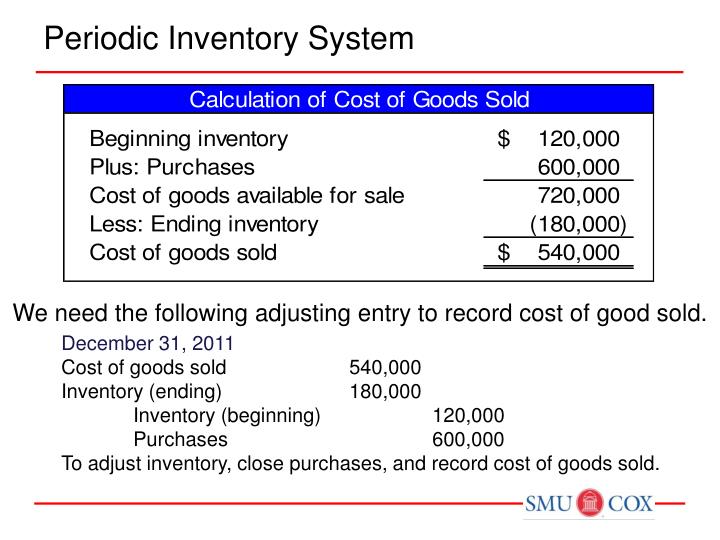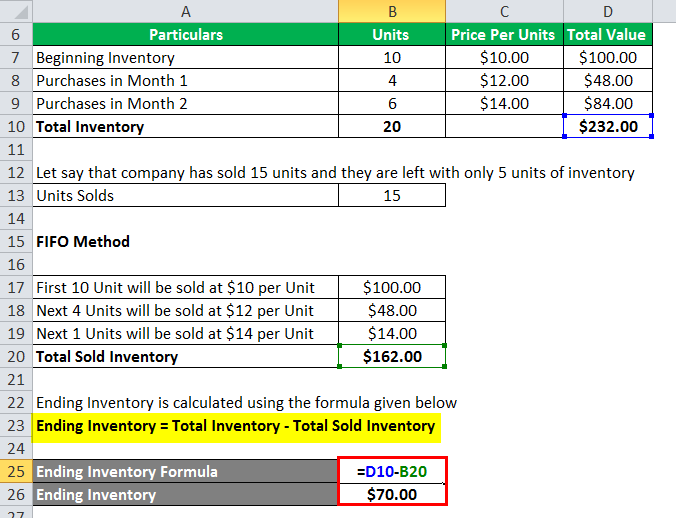
In inventory management, the FIFO (First-In, First-Out) method takes center stage, offering a performance of unmatched clarity and efficiency in the world of stock control. Imagine your inventory as a flowing river, where the oldest water—your earliest products—moves forward to be used first, ensuring nothing stagnates or loses its relevance. It is one of the most common methods to value inventory at the end of any accounting period; thus, it impacts the cost of goods sold during the particular period.

FIFO Method Explained: First-In, First-Out Inventory Management
To ensure your FIFO processes function effectively, conduct regular audits and inventory inspections. You can start by inspecting your shelves, checking expiration dates, and verifying inventory records. Consider using inventory management software to streamline the audit processes and get real-time visibility into inventory and order levels. This will help you create automated audit reports and identify issues that need more attention.
Methods of calculating inventory cost
Conversely, LIFO, permissible in the US, reduces taxable income during inflation by recognizing higher recent costs, offering short-term tax savings and improved cash flow. However, it may present a weaker financial stance due to lower earnings and outdated inventory valuation. Inventory costs are reported either on the balance sheet or are transferred to the income statement as an expense to match against sales revenue. When inventories are used up in production or are sold, their cost is transferred from the balance sheet to the income statement as the cost of goods sold.
Accurate Record-Keeping
This provides real-time cost of goods sold figures, improves the accuracy of profit calculations, and simplifies the financial reporting process. Implementing the First-In, First-Out (FIFO) method effectively can significantly improve your inventory management and financial reporting. Here are key best practices to ensure successful implementation of the FIFO inventory valuation method. Using FIFO does not necessarily mean that all the oldest inventory has been sold first—rather, it’s used as an assumption for calculation purposes. Learn more about what FIFO is and how it’s used to decide which inventory valuation methods are the right fit for your business.
- He brings extensive expertise in ERP and CRM systems, blending technical insight with clear, engaging content.
- Invest in quality inventory management software, train your staff thoroughly, and conduct regular audits.
- The problem with this method is the need to measure value of sales every time a sale takes place (e.g. using FIFO, LIFO or AVCO methods).
- The bad news is the periodic method does do things just a little differently.
The FIFO method’s logical approach to inventory flow makes cost tracking and calculation easier. This simplicity reduces accounting errors, speeds up month-end closings, and streamlines audits. The simplifies onboarding for new employees and streamlines accounting processes, which reduces overall operational expenses. To calculate the value of ending inventory using the FIFO periodic system, we first need to figure out how many inventory units are unsold at the end of the period. Here’s a summary of the purchases and sales from the first example, which we will use to calculate the ending inventory value using the FIFO periodic system.
To ensure the effectiveness of your FIFO processes, it is crucial to have well-trained inventory and order fulfillment employees. Educate your employees and provide comprehensive training about the importance of FIFO, along with the specific implementation and management procedures relevant to their roles. Establish actionable and repeatable processes so your team can accurately and quickly identify older inventory items, understand expiration dates, and prioritize shipping based on FIFO standards. You can use fulfillment software to assign and track FIFO-related tasks, while workflow automation can streamline training processes and ensure consistency for FIFO implementation.
By giving priority to remaining inventory, you can more effectively manage the risk of perishable goods expiring or outdated products becoming obsolete. Maximizing resources can also lead to a reduction in waste and tangible cost savings with minimal losses. Additionally, FIFO can positively influence inventory management techniques and enhance storage space utilization for logistics providers that support these businesses. The first-in first-out (FIFO) method is an inventory management process based on the principle that your oldest inventory items are the first to use or sell. It’s similar to how customers are served in a queue or line in a store based on their arrival order.
FIFO assumes that your oldest goods are sold first, while LIFO assumes that your newest goods are sold first. Let’s say on January 1st of the new year, Lee wants to calculate the cost of goods sold in the previous year. The construction and building materials industry benefits from FIFO as well. In free estimate template managing a wide variety of inventory needed for projects, FIFO helps prevent a buildup of materials that might deteriorate over time. In this deep dive into FIFO inventory management, we will answer all of these questions and more, highlighting important use cases and the strategic value it offers.
Help with inventory management is one of the many benefits to working with a 3PL. You can read DCL’s list of services to learn more, or check out the many companies we work with to ensure great logistics support. When the price of goods increases, those newer and more expensive goods are used first according to the LIFO method. This increases the overall cost of goods sold and leaves the cheaper, earlier purchased goods as inventory, which may end up not even being sold under the LIFO model.
Organizing your physical inventory makes it easier to ensure older stock is used or sold first. This reduces the risk of inventory obsolescence, minimizes waste for perishable goods, and helps maintain consistency between your physical stock and accounting records. First in, First out inventory method is compliant with IFRS and GAAP, which makes it ideal for companies with global operations or aspirations. This ensures consistent financial reporting across different countries, facilitates easier comparisons with competitors, and can improve a company’s credibility with international investors and partners. It also simplifies the process of mergers, acquisitions, or entering new markets. Managers, accountants, and business owners benefit from mastering FIFO to optimize inventory systems and financial practices.
